What To Expect In a Post-COVID Workplace: 4 Critical Factors
/How to prepare your organization for post-pandemic life, based on some popular theories
Many aspects of working life will change once we move past the pandemic, but no one can say precisely how. We are all in uncharted territory.
As more company leaders devalue the necessity of in-person communications and believe in the benefits of offsite work, office policies (and politics) may shift radically.
Here are some expert interpretations of the possible implications of the pandemic-induced economic disruption and our national work-from-home experiment. Their best guesses can inform a plan of action to carry your organization through this next phase.
1. The remote genie is out of the bottle for good
The pandemic challenged conventional wisdom about the critical nature of in-office work. The initial chaos of lockdown mandates quickly gave way to reimagining workflows and leveraging technology to maintain productivity.
The benefits of remote work, primarily the decrease in costs for companies and improvements in quality-of-life measures for many employees, could mark the end of pre-pandemic norms.
Now that it has proven to be a viable option, employers may find it necessary to offer employees flexibility to remain competitive—even when the economy fully recovers.
2. Much will depend on the vaccine
The complexity of getting most Americans vaccinated means that COVID-19 safety measures will stay in place well into 2021. Even as vaccines become readily available, companies may not require their employees to obtain them because of the risks of legal or cultural backlash.
Working remotely will remain the safest option as long as there remains a widespread risk of COVID-19. Employers must maintain a plan for managing offsite arrangements until the health threat minimizes.
3. Technology will continue to differentiate organizations
The organizations that demonstrated resourcefulness during the pandemic are the ones that will best withstand the disruption that many experts predict will follow it. And many of these are run by leaders who were quick to adopt the best technologies to get employees up and running as soon as possible.
If you haven’t already added software that facilitates communication and project management, do so!
4. Some recurring pieces of advice
Technology has helped many companies navigate the crisis, but leaders will need more than innovative platforms to stay competitive in the pandemic’s aftermath. To face the short- and long-term challenges of a post-Covid-19 world, here are some additional suggestions:
Look beyond Plan B
The longevity and unpredictability of this virus put an end to many of the best-laid plans. The genuinely flexible organizations pivoted as the circumstances dictated—and implemented Plan C (or D) when initial approaches failed.
For workplace operations, this means looking toward hybrid solutions that balance several factors. Remote work may not be for everyone, and determining who is required onsite can require difficult decisions. It also could mean expanding reliance on short-term contractors for onsite work.
Reimagine processes and policies
Now is the time to incorporate company-wide changes. The pandemic refocused employers’ perspectives and drove the adoption of new safety regulations. Many are ramping up efforts to keep workplaces hygienic and minimize future outbreaks by hiring more facilities managers, redesigning workspaces, and upgrading HVAC systems.
Clarify your purpose
Some long-term effects of COVID-19 are psychological. Much has been written about the toll the pandemic has had on our collective mental health. A very traumatic 2020—headlined by the virus but also featuring political and social unease—will be hard to put behind us quickly. One by-product of this unsettled environment is the need for many to find purpose in their professional work.
Address this from the top by operationalizing your organizational purpose. Take the time to focus on what really matters—your core mission—and communicate that to employees. It may be time to reframe the mission in updated language.
Adjust company culture
Leaders must demonstrate hope, resilience, and optimism. Culture is established from the top. Experts agree that what separates many of the best leaders from others is their compassion and the ability to manage a crisis effectively without losing their humanity.
If your organizational culture was weakened by the move to remote work, find ways to reestablish it. And remember to always emphasize cultural fit when hiring!
Carrington Legal Search is celebrating 20 years in business: we were in the trenches with our clients during 9/11 and 2008. We partner with our clients to identify leaders and mission-critical talent to shore up and grow companies even during the most challenging times. We are here for you! To make our nationwide network work for you, get in touch at 512-627-7467 or email carrie@carringtonlegal.com.


